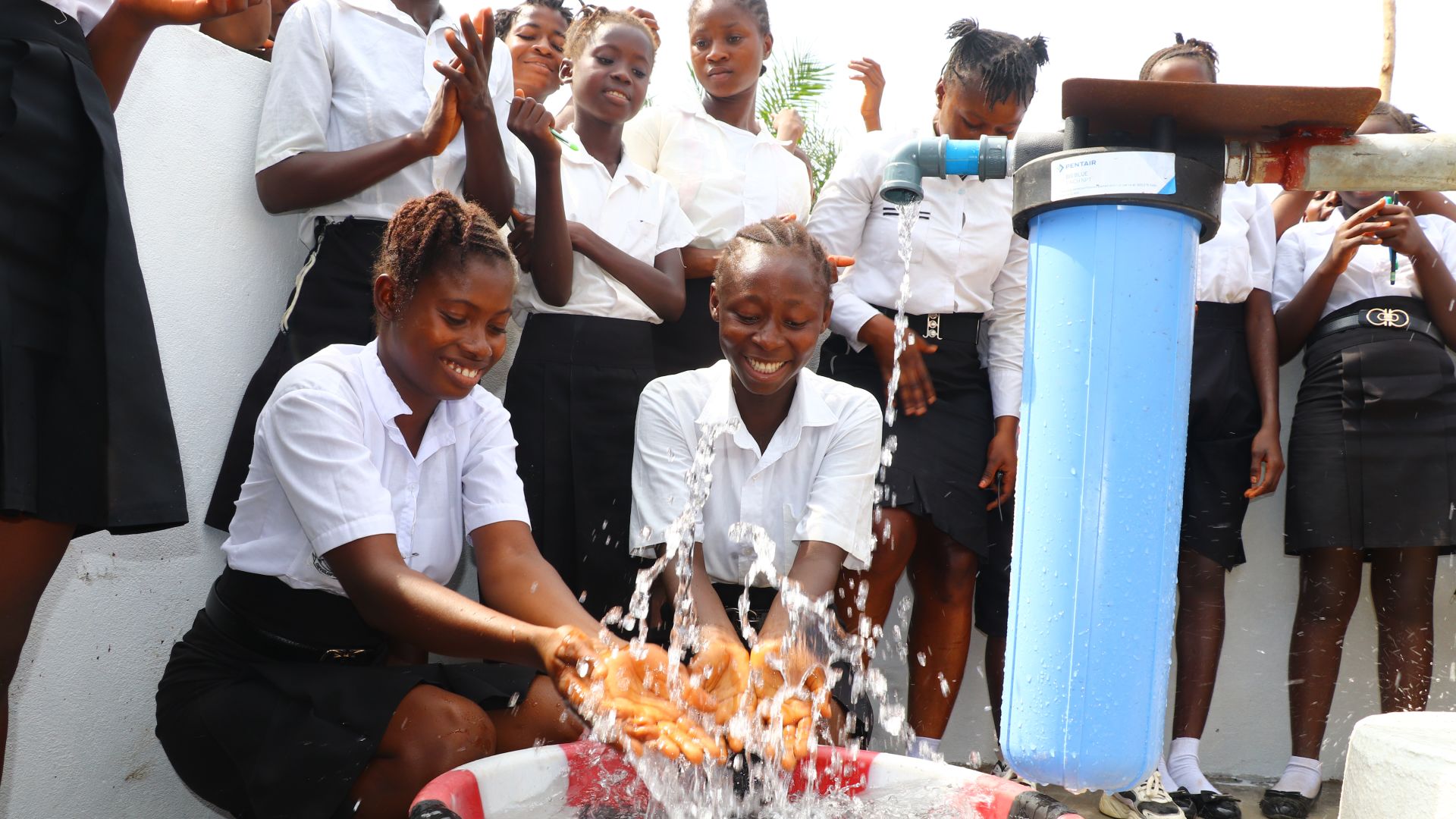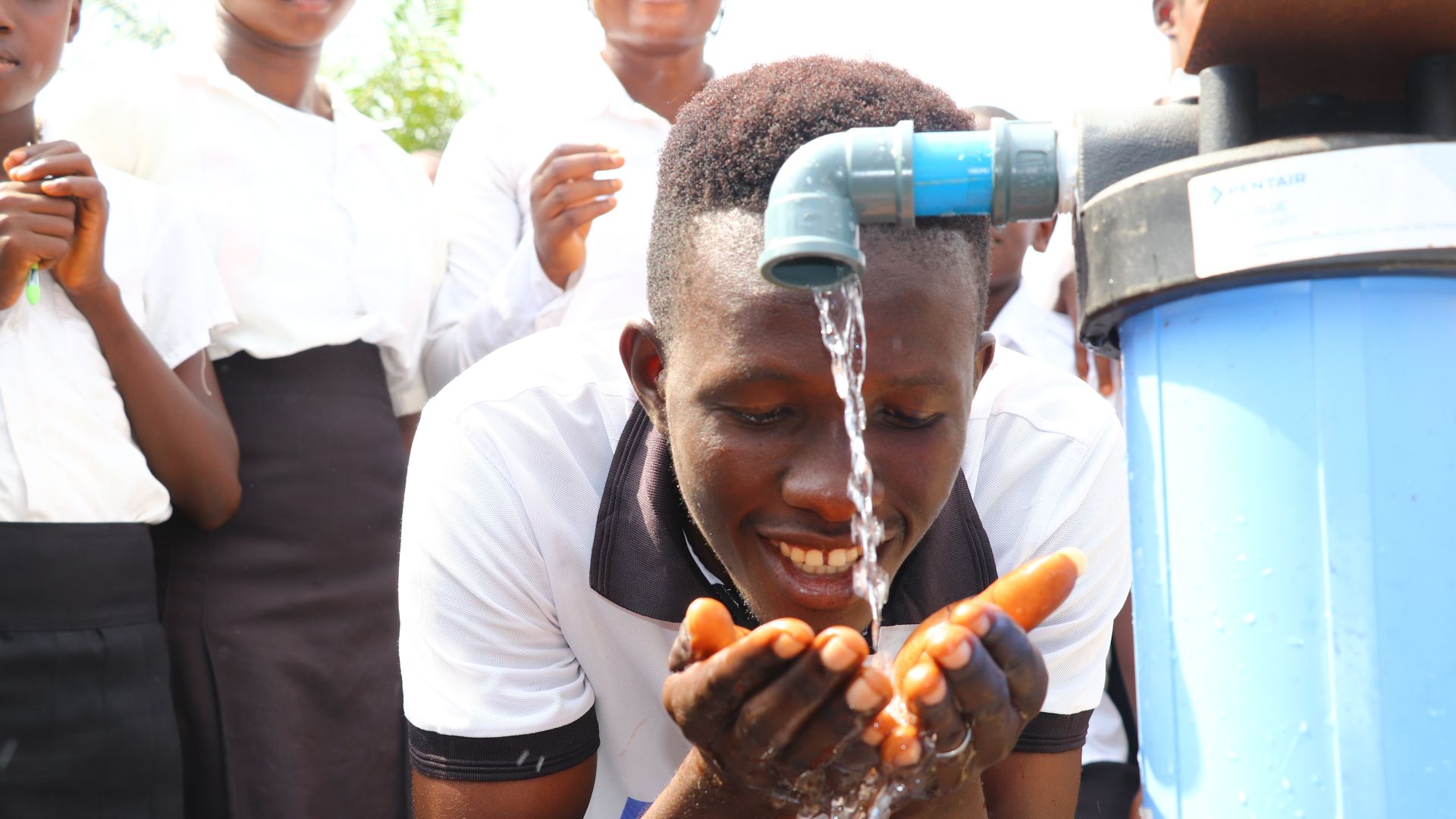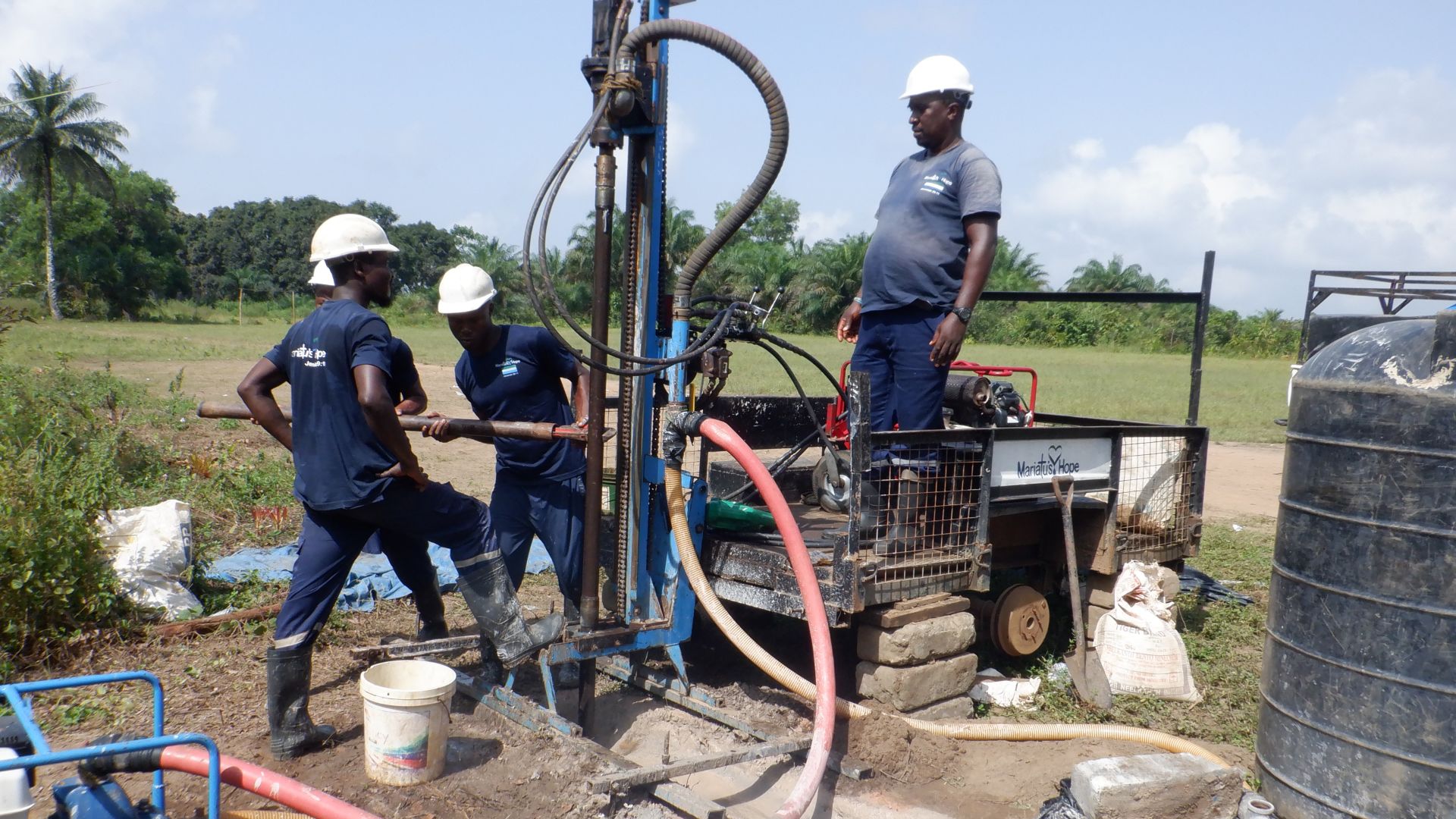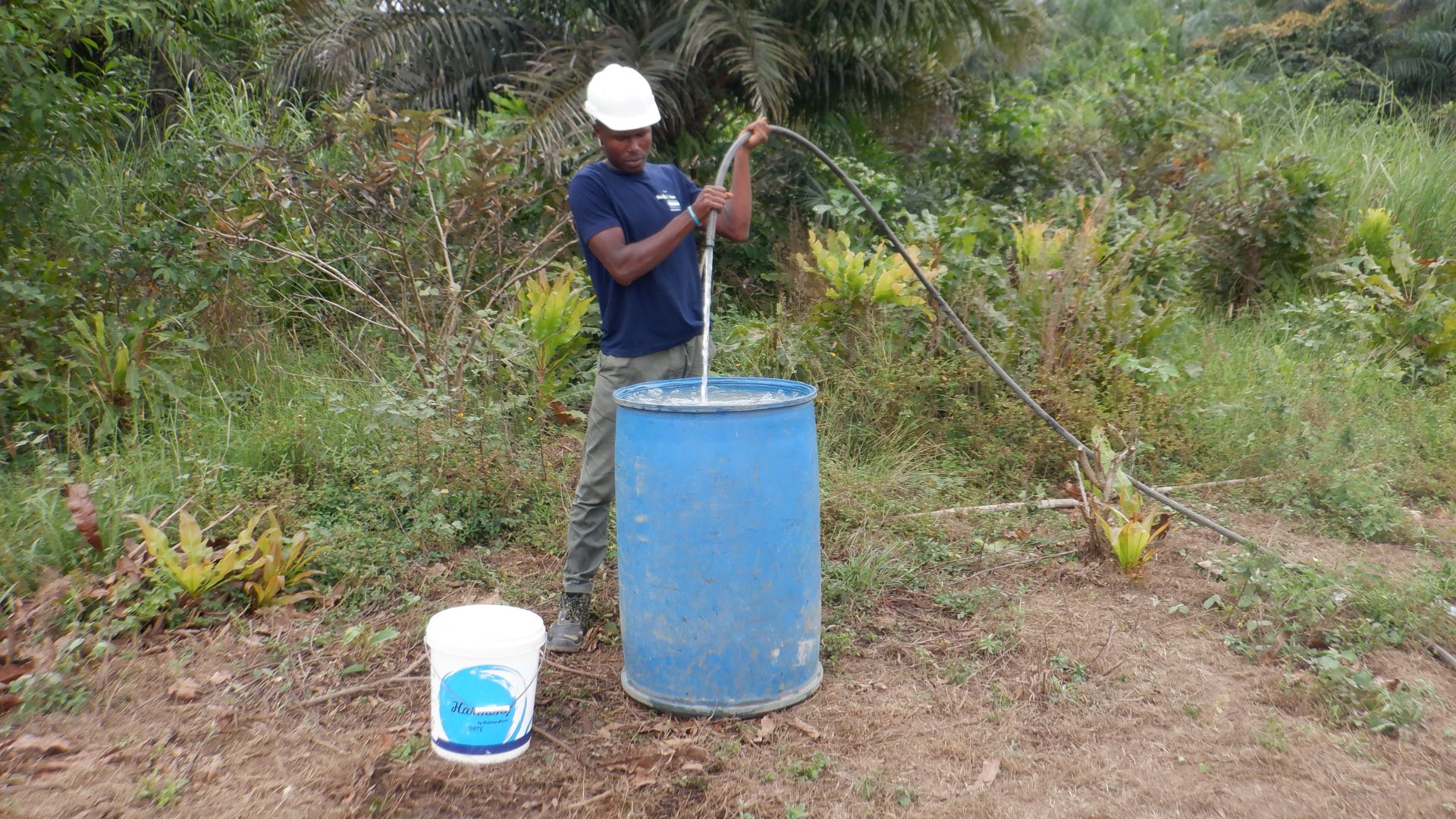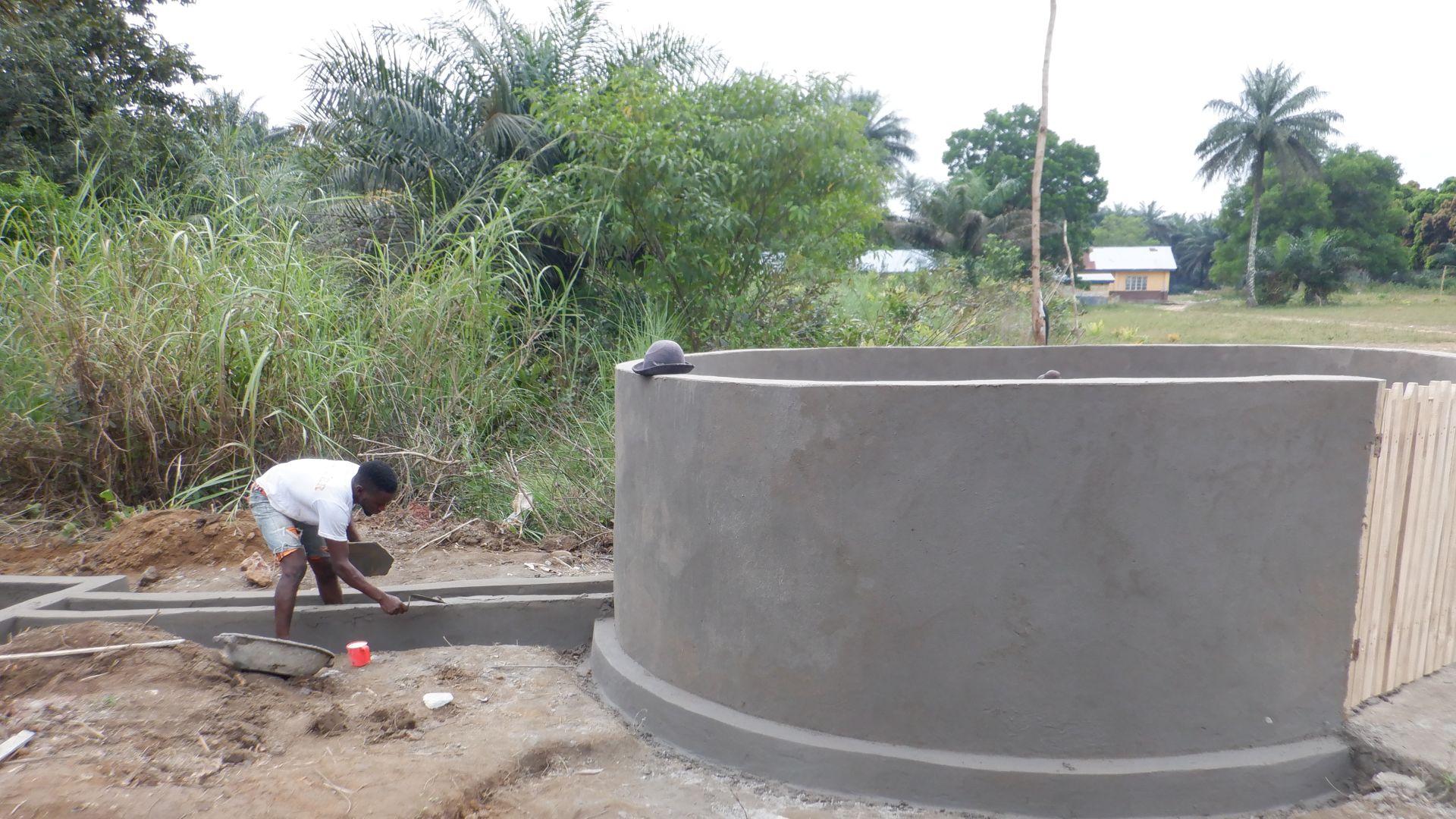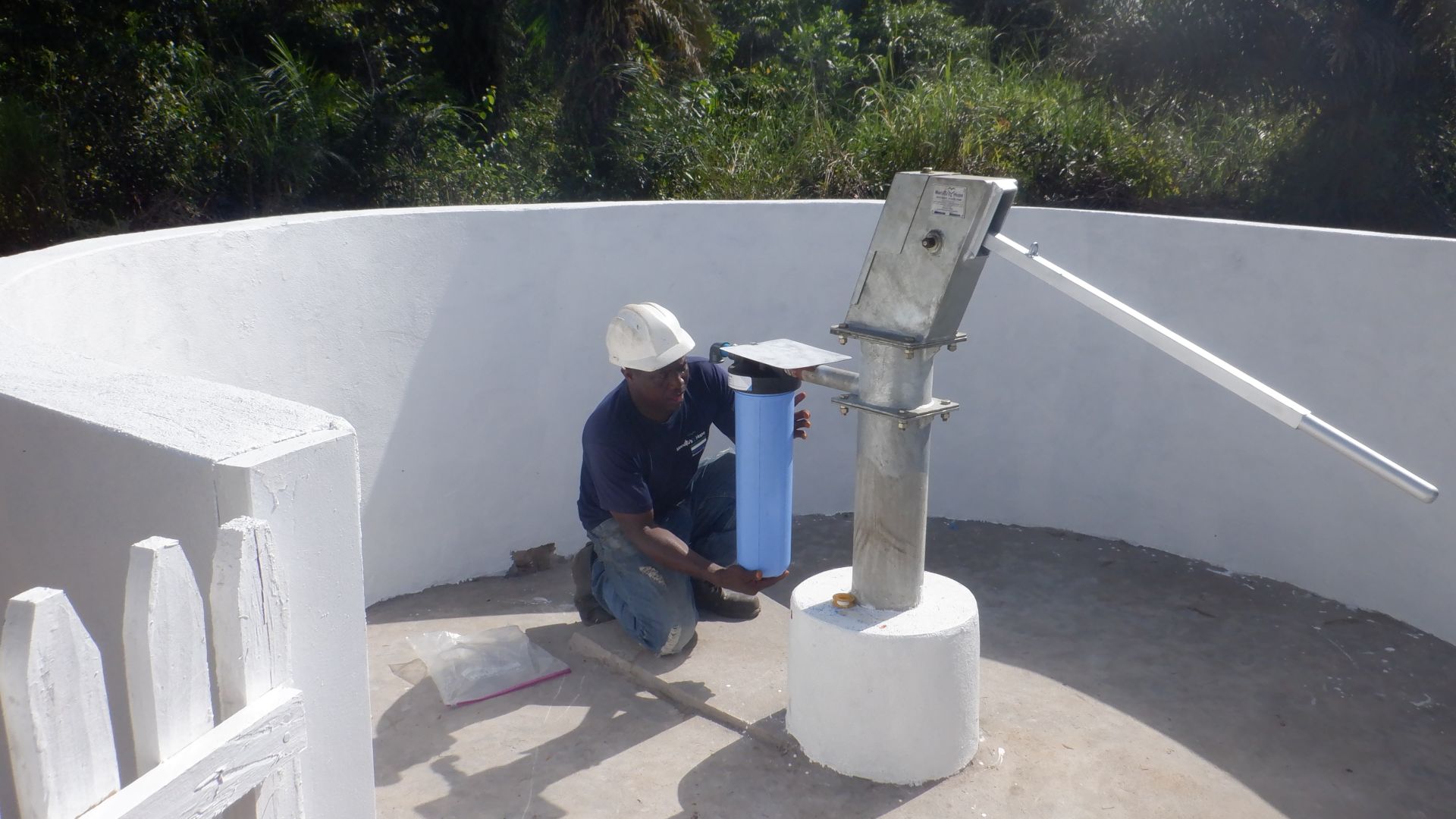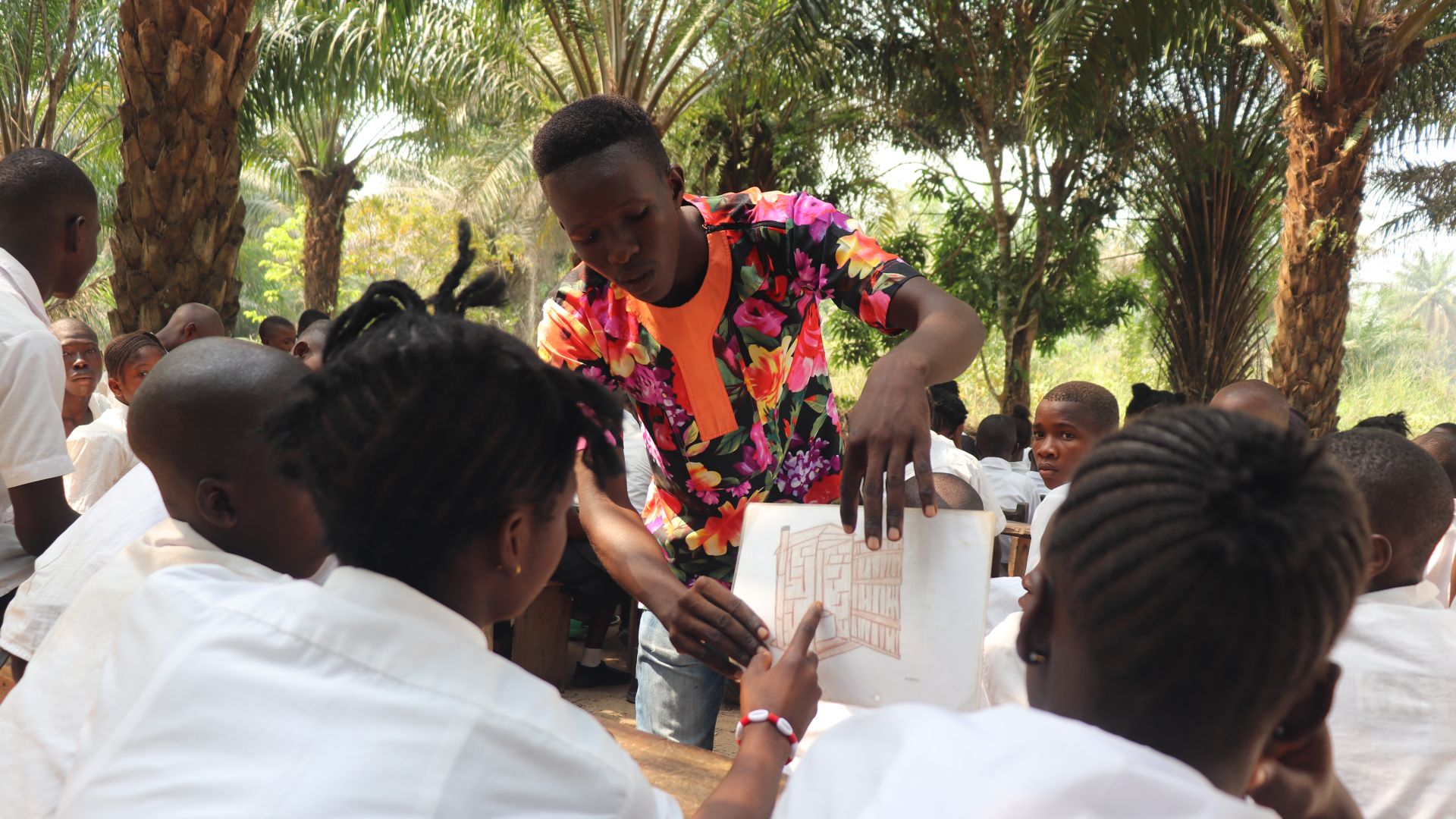The 313 students and staff at Bundalai Movement of Faith Secondary School struggle to access sufficient water to meet their daily needs because the dug well on their school campus faces several issues.
"The water source this school uses for drinking is a protected dug well with a hand pump. This well does not have a pump anymore, so the school uses a rubber bucket and rope to fetch some water from the well. This situation is causing this source to be open to contamination. This well does not provide enough water for this school," said Field Officer Alie Kamara.

The labor-intensive way of collecting water is not the only issue, though. It is seasonal and goes dry from March to April. When that happens, students search for water wherever they can find it, which always means leaving the school campus.
Due to the well's unreliability, students spend much of their day looking for and collecting water from other places. Some students collect water on their way to school, making them late for the general assembly in the morning. Most leave in the middle of the day during lunchtime to collect water. However, some students get up and walk out in the middle of class because they can't stand their thirst any longer. During all of these times, they should be in class learning, but water is an essential need, and without it, that is impossible.
When students go in search of water mid-day, they have two community sources they can visit. The first is a protected dug well with a pump at a nearby primary school, but as you can imagine, it faces the same seasonality challenges, especially with two schools full of thirsty children relying on it. When that source is dry or too overcrowded, students visit a dug well at a local community health post that is further away.
Both of these sources are overburdened by the amount of people relying on them. This leads to long wait times and frequent breakdowns. And sadly, all of that is for water that is questionable in quality since the water is not protected, as evidenced by many cases of waterborne illnesses.

"When I reach the school grounds in the morning, I must go for devotion (general assembly). Sometimes, I was chosen to fetch water in the school, and I must collect the rubber bucket and rush to the pump. But this pump is located at the health facility, and this well is restricted for me not to fetch water. I must go in search of water from other sources, and this situation causes me to spend much time at the water point. I would be late or miss classes, which affected my learning. Sometimes, while teaching is ongoing, I must take excuses from my class teacher and then go out searching for water to drink. This also affected my academic work," said 14-year-old Mohammed B., shown above collecting water from an alternative well in need of rehabilitation.
Students are not the only ones facing the daily water crisis.
"Since I was teaching in this school, there is no water point on the school grounds. Accessing safe, clean water is a big challenge in my school, and I find it difficult to get drinking water. The water source this school gets access to is not safe to drink, and sometimes when this water is fetched, I (have to) drink (it) because it is the only water that is available," said 27-year-old teacher Umaru Kamara (shown below).

"The other source is located far from the school. It is hard for me to get drinking water in the staff room, and after teaching, I must wash my hands to remove the dust chalk. Also, I find it difficult to use the restroom. Sometimes, when there is no water on the school grounds, I must send the school pupils to go fetch water, and this will cause me not to continue teaching because I must wait for them before class resumes. This situation affects me not to complete the topic/session, and it would not be easy for me to complete the academic syllabus," concluded Umaru.
Installing a new well on the school campus will enable students and staff to collect sufficient, clean water for drinking. It will also allow students to stop wandering the community so they can focus on learning and work towards a brighter future.
The Proposed Solution, Determined Together...
At The Water Project, everyone has a part in conversations and solutions. We operate in transparency, believing it benefits everyone. We expect reliability from one another as well as our water solutions. Everyone involved makes this possible through hard work and dedication.
In a joint discovery process, community members determine their most advantageous water solution alongside our technical experts. Read more specifics about this solution on the What We're Building tab of this project page. Then, community members lend their support by collecting needed construction materials (sometimes for months ahead of time!), providing labor alongside our artisans, sheltering and feeding the builders, and supplying additional resources.
Water Access for Everyone
This water project is one piece in a large puzzle. In Kenya, Sierra Leone, and Uganda, we're working toward complete coverage of reliable, maintained water sources that guarantee public access now and in the future within a 30-minute round trip for each community, household, school, and health center. One day, we hope to report that this has been achieved!
Training on Health, Hygiene & More
With the community's input, we've identified topics where training will increase positive health outcomes at personal, household, and community levels. We'll coordinate with them to find the best training date. Some examples of what we train communities on are:
- Improved hygiene, health, and sanitation habits
- Safe water handling, storage & treatment
- Disease prevention and proper handwashing
- Income-generation
- Community leadership, governance, & election of a water committee
- Operation and maintenance of the water point

 Borehole Well and Hand Pump
Borehole Well and Hand Pump
 Rehabilitation Project
Rehabilitation Project









